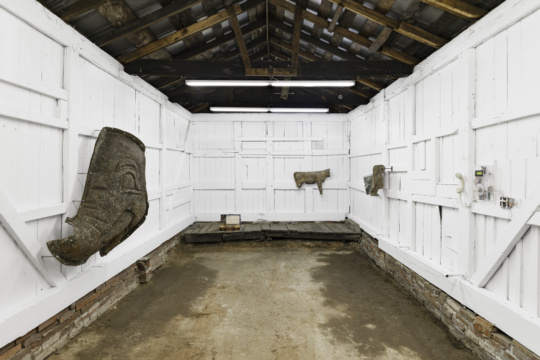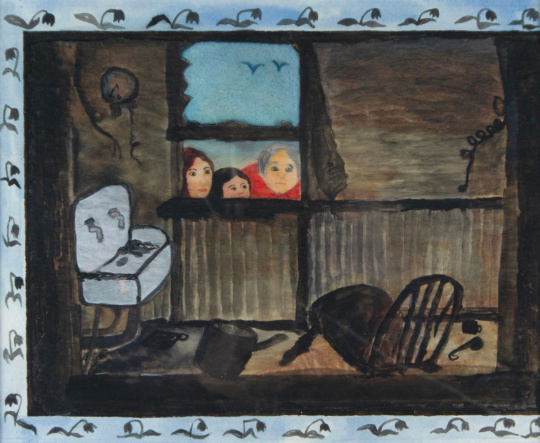
Dear BURNAWAY,
A person in San Diego bought a painting of mine and wants me to ship it to them. Not quite sure how to ship it best, especially since it’s going such a long way and it’s one of my larger pieces (24 by 48 inches). Do you have any advice on this front?
MadMax in Memphis
Dear MadMax,
Woohoo, congrats on the sale, dear! Always encouraging to hear.
Shipping and packing plays a big role in separating the wheat from the chaff when it comes to professional artists, galleries, and museums. Thus, I’m glad you’re not taking this lightly, as it is a major part of the art buying and art collecting process that often gets put on the priority backburner. But nothing is worse than receiving a piece of art that has been damaged in the shipping process, or one that arrives in a mangled, sloppy packing job. It really takes away from the often very pleasurable experience of unwrapping/seeing a work for the first time.
That said, it doesn’t matter how far it’s going, pack it the same. You’re in Memphis, so whether you’re shipping it to Nashville or Fairbanks, you want put the same amount of love and anal-retentive care into making sure that the work doesn’t get damaged. Essentially, there is just as much risk in a 100-mile trip as there is in a 1,000-mile trip (or it serves you best to assume there is).
While you’re packing, just keep imagining a burly, grumpy, overworked UPS guy hurling the package from the ground into the very back of the truck. Can your pack job survive it? It better. Write whatever you want on the box, like FRAGILE! or THIS SIDE UP, in sweet Sharpie notes or orange stickers, but I’m warning you—they don’t pay a damn bit of attention to them. Ever, I think.
Now, you have a couple of options, of course. If you don’t want to pack it yourself, you can call up a local art handler and have them do it for you. There are plenty of them working in Memphis, and most other cities. To find one, just call up a local gallery and ask for a recommendation.
On that note, don’t rely on UPS or FedEx to pack anything for you. If you want it done well, do it yourself. I’ve heard way too many sob stories of artists who relied on shipping stores to do stellar packing jobs, and surprise!, they didn’t. It’s in your best interest to oversee the entire process yourself.
Okay, now let’s move on to the packing steps for the DIY method.

Before you do anything, make sure your work is entirely dry. I know this might seem like a dum-dum thing to say, my sweetness, but I’m serious. Oil paintings can take weeks or months to dry, don’t rush the piece out the door the same week you finish it. Give it ample time to dry, especially if you’ve got some heavy impasto passages on your canvas. (Also, side note, don’t bring wet paintings to galleries either. Let your stuff dry, people!)
If your work happens to be framed behind glass, use blue painter’s tape to cover the outside of the glass. (It’s the safest and easiest to remove, even after a couple weeks.) This way, if things go awry and the glass breaks, it won’t slice and dice the painting. It will also help protect the glass while the dude lobs it around real good for you.
Next, wrap the painting in plastic. You want to seal it off so that no moisture or debris or anything like that can get to it. You can get rolls of thick plastic at most hardware stores. This Husky brand 4 mil. plastic from Home Depot works great.
From here, especially if the painting is framed, I recommend using an Artbox. They are versatile, customizable, and all-around pretty great. A little pricey, but they do the job well. You just tear out the perforated foam to fit the size of your painting. Easy peasy.
If you don’t want to go the Artbox route, the next step is an ample layer of bubble wrap secured in place with tape. Then you want to sandwich the painting between two pieces of cardboard. After that, use foam corners so the piece floats in the center of the shipping box (the box should be a few inches larger than your painting). Pack it as much as necessary to make sure it’s stable and nothing moves. (Note: steer clear of packing peanuts; they can be sticky and smush easily (not to mention the environmental and health hazards of polystyrene), instead wad up kraft paper or those airbag things to fill any spaces.
After that, seal it up tight and it should be safe to ship! Toss it around a bit to test out your hard work, though.
Do you have a question for Sara? Email her at [email protected].





